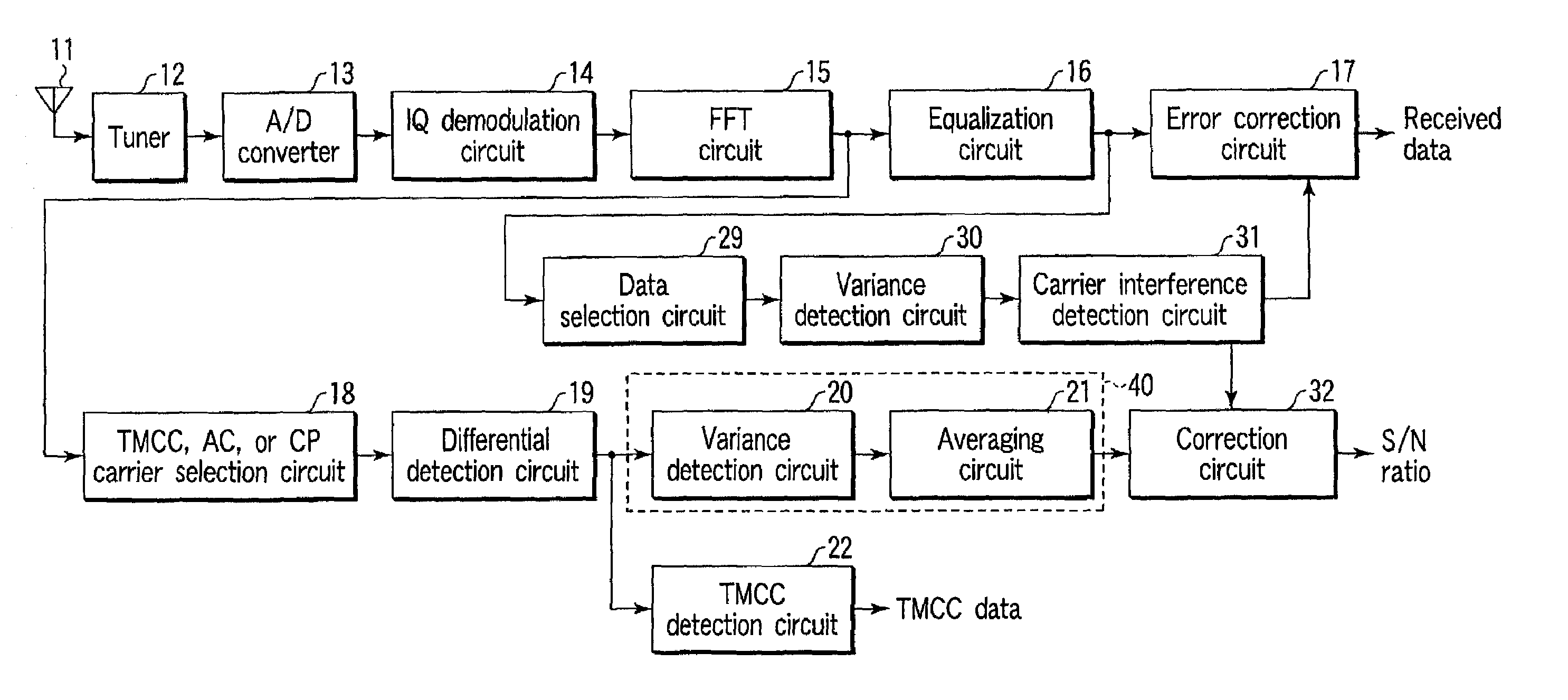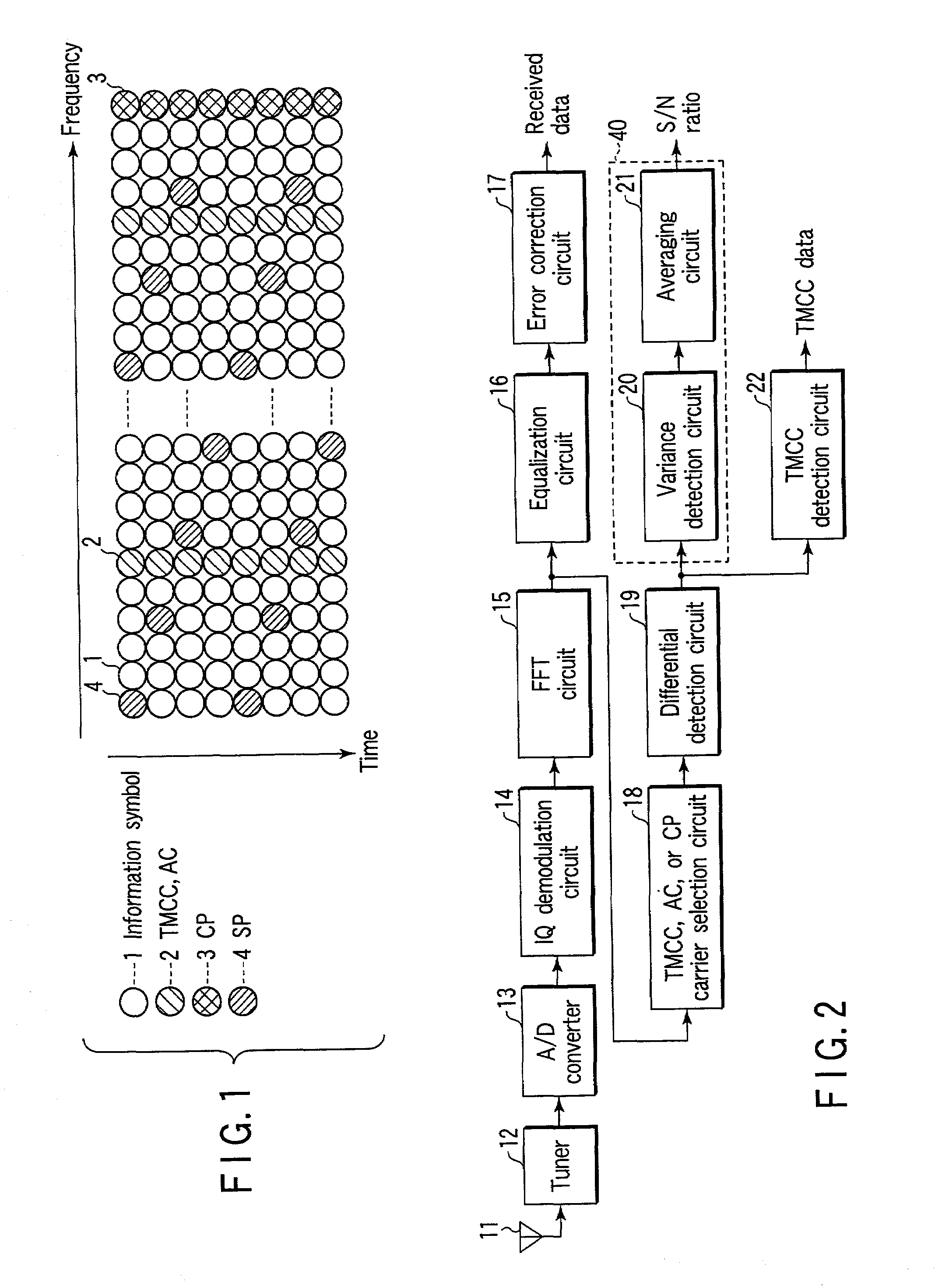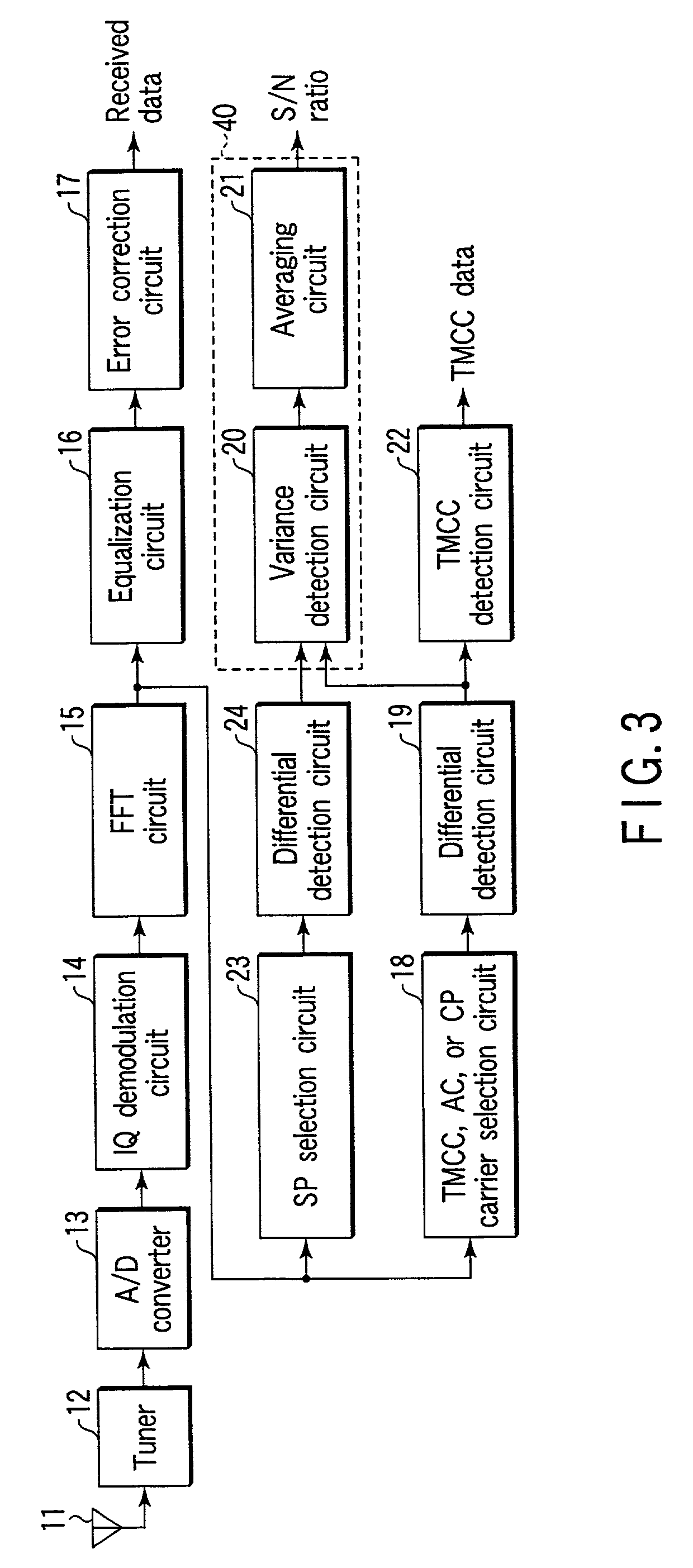OFDM transmit signal receiver
a transmit signal and receiver technology, applied in the field of receivers for receiving ofdm (orthogonal frequency division multiple) transmit signals, can solve the problems of limiting the detection range, wasting a long time to detect the reception quality signal, and wasting detection-unit tim
- Summary
- Abstract
- Description
- Claims
- Application Information
AI Technical Summary
Benefits of technology
Problems solved by technology
Method used
Image
Examples
first embodiment
[0023]The following will describe an Orthogonal Frequency Division Multiple transmit signal receiver (hereinafter abbreviated as OFDM transmit signal receiver) according to the first embodiment of the present invention.
[0024]FIG. 2 is a block diagram for showing a configuration of an OFDM transmit signal receiver according to the first embodiment.
[0025]In FIG. 2, OFDM transmit signals received at an antenna 11 are input to a tuner 12, which then selects such an OFDM transmit signal of these that is of a predetermined channel and converts it into an IF (intermediate frequency) band signal. An output of the tuner 12 is supplied to an analog / digital converter (A / D converter) 13, which then converts it into a digital signal.
[0026]An output of the A / D converter 13 is supplied to an IQ demodulation circuit 14. The IQ demodulation circuit 14 is comprised of a quadrature detection circuit, which serves to detect the output of the A / D converter 13 in a quasi-synchronous orthogonal manner and...
second embodiment
[0036]The following will describe the OFDM transmit signal receiver according to the second embodiment of the present invention.
[0037]FIG. 3 is a block diagram for showing a configuration of the OFDM transmit signal receiver according to the second embodiment. In addition to the configuration of the first embodiment shown in FIG. 2, the OFDM transmit signal receiver of this second embodiment has an SP selection circuit 23 for detecting an S / N ratio of a received signal using the SP signal 4 and a differential detection circuit 24. The same components as those of the first embodiment are indicated by the same reference numerals and so their explanation is omitted to describe only the different components as follows.
[0038]As shown in FIG. 3, an output of the above-mentioned FFT circuit 15 branches to be supplied to the SP selection circuit 23. The SP selection circuit 23 selects only the SP signal shown in FIG. 1 and supplies it to the differential detection circuit 24. The differenti...
third embodiment
[0045]The following will describe the OFDM transmit signal receiver according to the third embodiment of the present invention.
[0046]FIG. 4 is a block diagram for showing a configuration of the OFDM transmit signal receiver of the third embodiment. In addition to the configuration of the first embodiment shown in FIG. 2, the OFDM transmit signal receiver of the third embodiment has a data selection circuit 25 for using information symbol 1 to detect an S / N ratio of a received signal, a variance detection circuit 26, an averaging circuit 27, and a selection circuit 28 for selecting either one of an S / N ratio detected using information symbol 1 and that detected using the TMCC and AC carriers 2 and the CP carrier 3. The same components as those of the first embodiment are indicated by the same reference numerals and so their explanation is omitted to describe only the different components as follows.
[0047]As shown in FIG. 4, an output of the above-mentioned equalization circuit 16 bra...
PUM
 Login to View More
Login to View More Abstract
Description
Claims
Application Information
 Login to View More
Login to View More - R&D
- Intellectual Property
- Life Sciences
- Materials
- Tech Scout
- Unparalleled Data Quality
- Higher Quality Content
- 60% Fewer Hallucinations
Browse by: Latest US Patents, China's latest patents, Technical Efficacy Thesaurus, Application Domain, Technology Topic, Popular Technical Reports.
© 2025 PatSnap. All rights reserved.Legal|Privacy policy|Modern Slavery Act Transparency Statement|Sitemap|About US| Contact US: help@patsnap.com



